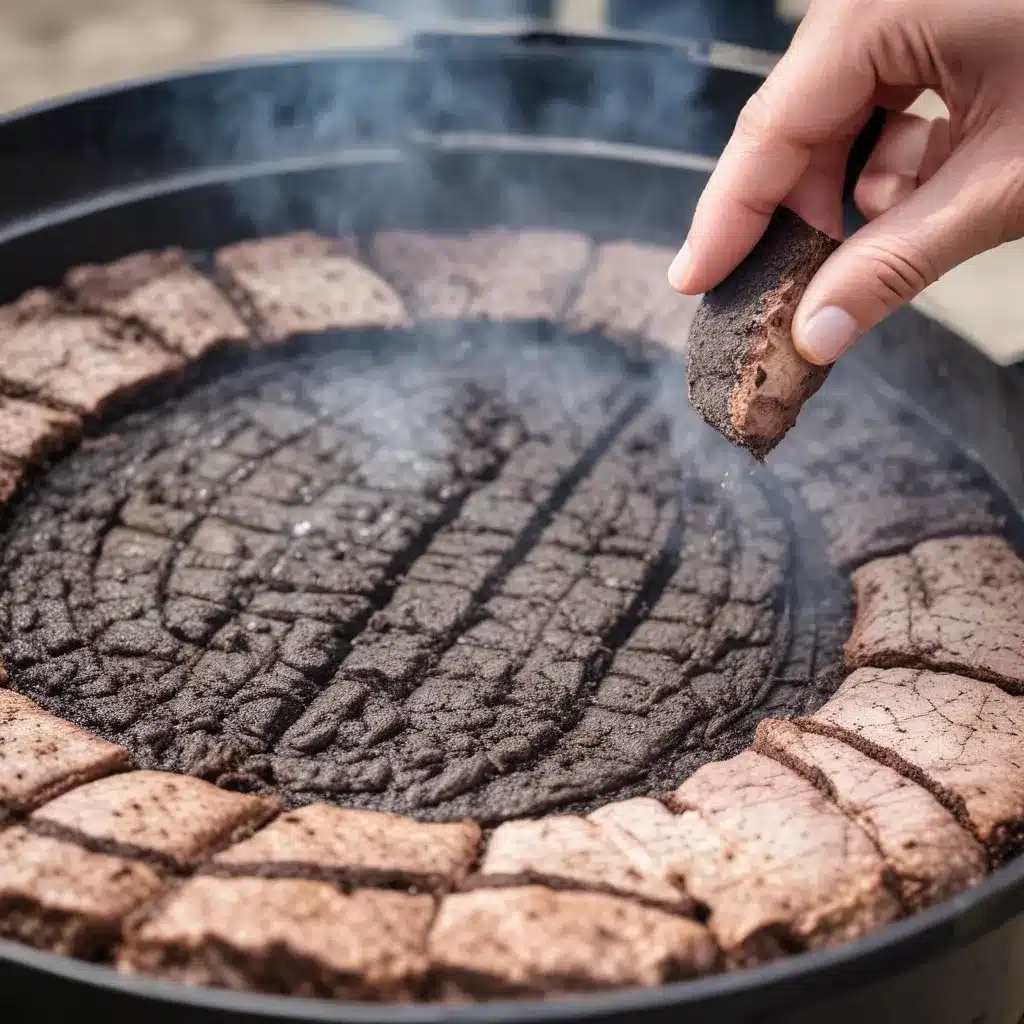
As an experienced barbecue pitmaster, I’ve spent countless hours perfecting my craft and honing my skills to produce the kind of competition-worthy smoked meats that make judges’ mouths water. One of the telltale signs of expertly smoked meat is the elusive, deep pink smoke ring that forms just beneath the surface. This prized feature not only adds visual appeal but also contributes to the overall flavor and texture of the final product.
Unlock the Secrets to Smoke Ring Success
If you’re looking to take your backyard barbecue to the next level and impress your friends and family with restaurant-quality smoked meats, pay close attention. I’m about to share the insider tips and techniques that have helped me consistently produce those sought-after smoke rings, time and time again.
1. Master the Art of Temperature Control
Achieving that perfect smoke ring starts with your smoker’s temperature. The key is maintaining a consistent, low-and-slow cooking environment, typically between 225-275°F. This gradual, even heating allows the smoke to penetrate the meat, creating the desired pinkish hue.
Fluctuations in temperature can disrupt the chemical reactions responsible for the smoke ring formation, so it’s crucial to closely monitor your smoker and make adjustments as needed. Consider investing in a high-quality digital thermometer to ensure precise temperature readings throughout the cooking process.
2. Embrace the Power of Charcoal and Wood
While pellet grills and electric smokers have their advantages, for the ultimate smoke ring, you can’t beat the performance of a good old-fashioned charcoal smoker combined with hardwood chunks or chips. The smoldering charcoal provides a consistent heat source, while the wood contributes the aromatic, flavorful smoke that’s essential for developing that vibrant pink hue.
Experiment with different wood varieties, like oak, hickory, or mesquite, to find the perfect flavor profile that complements your chosen protein. Remember to soak the wood chips in water for 30 minutes before adding them to the smoker to ensure a steady, consistent smoke output.
3. Maintain a Moist Environment
Keeping your smoker environment moist is another key factor in achieving the perfect smoke ring. The moisture in the air helps facilitate the chemical reactions that lead to the formation of that beautiful pinkish hue.
Try placing a water pan or aluminum foil tray filled with water or broth directly on the heat source. This will create a humid, steamy atmosphere within your smoker, aiding in the smoke ring development. Avoid letting the water pan run dry, as this can disrupt the moisture balance and hinder the smoke ring formation.
4. Choose the Right Meat Cuts
Not all cuts of meat are created equal when it comes to smoke ring potential. Lean, dense cuts like brisket, pork shoulder, and beef ribs tend to be the most responsive to the smoke ring-forming process.
The myoglobin content in these tougher, less fatty cuts is higher, which provides more reactive material for the smoke to interact with. Conversely, delicate, high-fat cuts like chicken breasts or pork tenderloin may not develop as pronounced a smoke ring, as the fat can inhibit the smoke’s ability to penetrate the meat.
5. Patience is a Virtue
Rushing the smoking process is a sure-fire way to sabotage your smoke ring efforts. Slow and steady wins the race when it comes to competition-level barbecue. Resist the urge to constantly check on your meat or make frequent temperature adjustments, as this can disrupt the steady flow of smoke and oxygen that’s essential for the smoke ring to form.
Instead, try to resist the temptation to lift the lid and let the smoke and heat do their magic. Most competition-worthy smoked meats require anywhere from 6 to 24 hours of low-and-slow cooking to achieve that perfect pinkish hue and tender, juicy texture.
6. Utilize the “Stall” to Your Advantage
The dreaded “stall” is a common phenomenon in low-and-slow smoking, where the internal temperature of the meat plateaus and refuses to budge for hours on end. Rather than panicking, savvy pitmasters know how to harness the stall to their advantage when it comes to creating that coveted smoke ring.
During the stall, the meat is actively absorbing smoke and moisture, which is precisely what you want for developing that signature pink hue. Resist the temptation to increase the heat or wrap the meat in foil, as this can disrupt the delicate balance and halt the smoke ring formation.
7. Don’t Forget the Rub
While the smoke itself is the primary driver of that pink ring, the seasoning rub you apply to the meat can also play a crucial role. Certain ingredients, like sodium nitrite, can actually help facilitate the chemical reactions that lead to the smoke ring’s development.
Consider incorporating pink curing salt, also known as Prague Powder #1, into your rub. This special salt contains sodium nitrite, which helps bind the meat’s myoglobin to the smoke, resulting in a deeper, more vibrant smoke ring. Just be sure to use it judiciously, as too much can result in an undesirable “hammy” flavor.
Putting It All Together for Competition-Worthy Smoked Meats
By mastering these seven essential techniques, you’ll be well on your way to consistently producing those picture-perfect smoke rings that will have your fellow pitmasters green with envy. Remember, barbecue is both an art and a science, and the more you’re willing to experiment and hone your craft, the more rewarding the results will be.
So fire up your smoker, grab your favorite cuts of meat, and get ready to impress your friends and family with your newfound mastery of the smoke ring. And don’t forget to visit Creekside BBQ for all your barbecue equipment, accessories, and mouthwatering recipe inspiration. Happy smoking!

